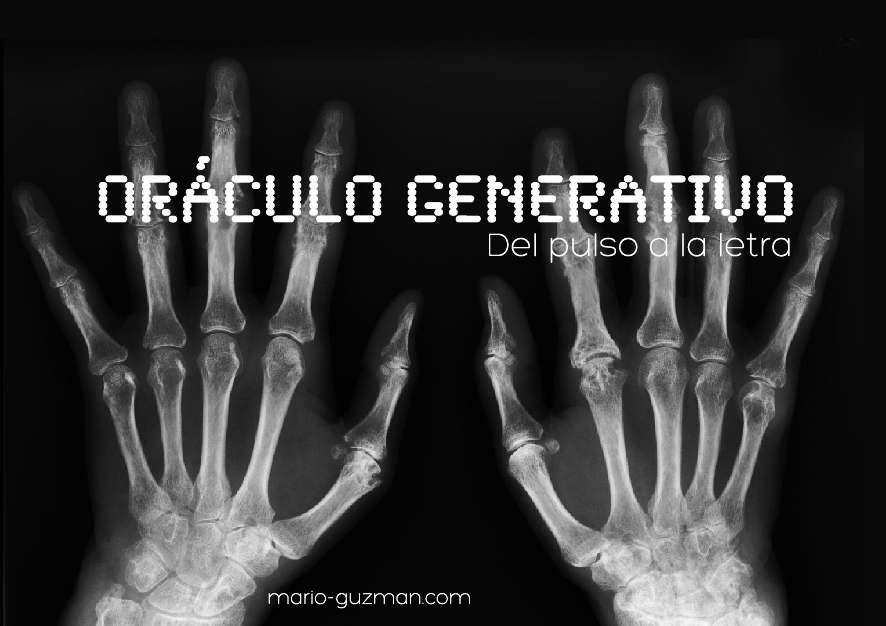

Body and text becomes one.
In the Generative Oracle's writing there is no pure present, but a deferred sprouting. The reader accesses a time of waiting where his body participates in the emergence of the text. The omen does not precede and does not exist without the individual, its existence is linked to the complete presence of the subject. In this scenario, text and body are inseparable.
The design.
The user interface consists of a set of signs linked to the notion of future and writing: radiographs of hands lit intermittently by red leds that write in morse code the word destiny (- .... ... - .. -. -). Word that in Arabic maktub simultaneously means 'destiny' and 'inscription'.
Writing contemporary omens.
In ancient times, oracular practice was considered a spiritual and intellectual
activity of a religious nature that provided answers to logical and pragmatic dilemmas. Formulated as
irrefutable facts, their omens were used to resolve moral, economic,
war and territorial conflicts.
Today we recognize the role of polysemy (the very word 'oracle' refers
to both the physical space, the enunciator, the discourse and the interpreter) in the productive and
enigmatic result of its propositions.
To write these omens, the project received advice from the Department of Ancient Philology at the
Faculty of Philosophy and Letters of the University of Buenos Aires to find adecuate critical, literary and
philosophical materials.

Exhibitions
Poextrónica: Past and Future of Digital Literature.
Future Zone, 43 Internacional Book Fair, Buenos
Aires, Argentina, 2016.
Young Art Biennial. Konex Cultural
Center, Buenos Aires, Argentina, 2015.
Young Art Biennial. Metropolitan Design
Center, Buenos Aires, Argentina, 2015.
Expansions. The time of digital literature. E-Poetry Festival
MUNTREF Contemporary Art Center, Buenos Aires, 2015.
Erratics. First Experimental Color
Center, Santa Fe, Argentina, 2015.
Parallel in series. Gallery: PANAL 361,
Buenos Aires, Argentina, 2014.

